The Use of Big Data in Regenerative Planning
Abstract
:1. Introduction
- Can Big Data, when used considering an eco-systemic approach, help in shaping policies and support the development of cities?
- What is the potential of Big Data-based tools in supporting and assessing the regenerative design of urban spaces?
- Under what conditions can Big Data be integrated into regenerative design and sustainable planning?
2. Background—Regenerative Sustainability, Its Assessment, and the Opportunity to Use Big Data
- self-sufficiency in most aspects, leading to a judicious use of the local resources within the context of community lives;
- the wide introduction of conservation technologies in areas of water, energy, and appropriate building materials (positive energy and material flows);
- respecting natural conditions, avoiding loss of the natural landscape and most importantly, of all un-checked consumption, including fighting the urban sprawl (sustainable land use);
- promoting the mixed-land use and multi-level use in urban areas to reduce the energy consumption of the transportation sector while at the same time;
- adding to vibrant urban life, which is a base for community development and an important aspect in building social cohesion;
3. Methodological Approach
- The first phase of the study is based on gap analysis, allowing the identification of opportunities and barriers that could possibly prevent or foster the use of Big Data in relation to the emerging regenerative sustainability paradigm. While exploring features of regenerative settlements (described in Section 2), the authors identify which frameworks can be considered as the most useful for such an approach in designing and assessing planning processes. The paper specifically connects the above mentioned frameworks to the possibilities emerging from the use of Big Data.
- Further, a review of current processes where Big Data-based tools are used in the projects aiming to improve urban sustainability has been performed. As a result, based on the typology by Thakuriah et al. [24], a classification of data sources potentially supporting regenerative planning has been introduced (Section 6).
- To answer the questions outlined in the introduction, a comparative analysis of the mechanisms supporting regenerative planning using Big Data was conducted. As a result, the crucial factors determining the usability of those tools for the assessment of projects which support regenerative planning were identified in order to create a base framework for the model of analysis.
- The next part of the research is based on case studies analysis. The criteria for selecting projects were identified according to the approach introduced by Seawright and Gerring [25], who indicated seven methods of cross-case selection and analysis allowing the definition of: typical, diverse, extreme, deviant, influential, most similar, and most different cases. For this research, the first two—typicality and diversity of studied projects—were identified as the crucial factors for allowing researchers to get a full picture of how the planning of regenerative human settlements can be supported by Big Data-based tools.
- As a next step of the research, the following criteria for the analysis of case studies were adopted:
- -
- (1) Scale—Depending on what kind of action is needed, the area defined for intervention can vary; therefore, selected case studies are supposed to give the possibility of implementation on various scales.
- -
- (2) Type of data—For each planning process, individual studies and solutions are designed; therefore, each project requires a different type of data from different sources and owners.
- -
- (3) Country development phase—Each place has a different specificity and capacity, so the case studies present projects from different continents and countries: still developing, in transition, and developed.
- -
- (4) Phase of planning—The circular approach requires that not only tools for planning and implementation, but also for evaluation and finally for improving existing solutions, are analyzed.
- -
- (5) Thematic area—Most importantly, based on the holistic approach, all aspects of city planning should be covered; therefore, the case studies described below address all the goals of the selected framework (introduced in Section 4).
- Using Urban informatics term as a key word in the conducted literature study, the authors, taking into consideration the above mentioned criteria, studied over 50 examples of projects applying Big Data tools. The search was conducted within projects and publications of or related to the most known data centres, such as the UCL Centre for Advanced Spatial Analysis, MIT Media Lab, MIT Senseable City Lab, Future Cities Laboratory, and Urban Big Data Centre.
- To further the aim of recognizing the potential usability of Big Data in supporting regenerative planning projects, the conceptual framework for a model was introduced and tested as the main result of the research. The most suitable Big Data-based projects allowing for analysis aimed at enhancing design sustainability were mapped upon these aspects according to the developed model.
- Finally, the test run for a model’s usability allowed us to draw conclusions on how projects using Big Data-based tools support a regenerative approach in the present, as well as in which areas their role could be enhanced.
4. Evolution of Frameworks for Assessing Sustainability
- (1) active, inclusive, and safe—fair, tolerant, and cohesive with a strong local culture and other shared community activities;
- (2) well-run—with effective and inclusive participation, representation, and leadership;
- (3) well-connected—with good transport services and communication linking people to jobs, schools, and health and other services;
- (4) well-served—with public, private, community, and voluntary services that are appropriate to people’s needs and accessible to all;
- (5) environmentally sensitive—providing places for people to live that are considerate of the environment;
- (6) equity—fair for everyone;
- (7) thriving—with a flourishing, diverse, and innovative local economy;
- (8) well-designed and -built—featuring quality built and natural environment.
5. Review of Current Processes, Tools, and Mechanism of Using Big Data in the Built Environment
6. Classification of Data Sources Supporting Regenerative Planning
- Sensor systems gathered data (infrastructure-based or moving object sensors)—most often including information on environmental issues, as well as blue and green infrastructure, provided by the public sector and completed by researchers.
- User-Generated Content (“social” or “human” sensors)—information generated by online activity, including social media, but also when using GPS systems. Databases are organized by private business; however, quite often with open access, since collected data is provided by Internet users.
- Administrative (governmental) data, both open and confidential micro-data—accessible in Europe due to the implementation of the INSPIRE directive, managed by public institutions, consisting of information such as: (bank) transactions, taxes etc.; but also confidential (on the level of the individual micro-data), concerning, e.g., employment and health. The important aspect of such data is spatial information infrastructure supporting most urban analyses.
- Private Sector Data (customer and transactions records)—with limited access provided by the private business, e.g., financial institutions, including information on business records and customer profile.
- Hybrid data (linked and synthetic data)—linked with Big Data although completed with surveys or census-administrative records conducted by, e.g., planning institutions, as well as governmental organizations.
7. Model of Analysis to Implement Big Data Use in the Sustainable Design and Planning Process
8. Discussion
9. Conclusions
Author Contributions
Funding
Acknowledgments
Conflicts of Interest
References
- Lohr, S. The age of Big Data. N.Y. Times 2012. Available online: http://www.nytimes.com/2012/02/12/sunday-review/big-datas-impact-in-the-world.html?_r=0j (accessed on 5 January 2018).
- Sassen, S. Agglomeration in Digital Era in: Cities in a World Economy; Pine Forge Press: London, UK, 2000. [Google Scholar]
- Boyd, J.; Banzhaf, S. What are ecosystem services? The need for standardized environmental accounting units. Ecol. Econ. 2007, 63, 2–3. [Google Scholar] [CrossRef]
- Sukhdev, P.; Wittmer, H.; Schröter-Schlaack, C.; Nesshöver, C.; Bishop, J.; Brink, P.T.; Gundimeda, H.; Kumar, P.; Simmons, B. The Economics of Ecosystems and Biodiversity: Mainstreaming the Economics of Nature: A Synthesis of the Approach, Conclusions and Recommendations of TEEB; UNEP: Mandaluyong, Philippines, 2010; Available online: http://doc.teebweb.org/wp-content/uploads/Study%20and%20Reports/Reports/Synthesis%20report/TEEB%20Synthesis%20Report%202010.pdf (accessed on 25 July 2018).
- Tzoulas, K.; Korpel, K.; Vennc, S.; Yli-Pelkonen, V.; Kaźmierczak, A.; Niemel, J.; James, P. Promoting ecosystem and human health in urban areas using Green Infrastructure: A literature review. Landsc. Urban Plan. 2007, 81, 167–178. [Google Scholar] [CrossRef] [Green Version]
- Pardo, T.A. Conceptualizing smart city with dimensions of technology, people, and institutions. In Proceedings of the 12th Annual International Digital Government Research Conference: Digital Government Innovation in Challenging Times, College Park, MD, USA, 12–15 June 2011; pp. 282–291. [Google Scholar]
- Sonetti, G. Di cosa parlano quando parlano di resilienza urbana. CRIOS 2016, 12. [Google Scholar] [CrossRef]
- Hancke, G.P.; Hancke, J.G.P. The role of advanced sensing in smart cities. Sensors 2012, 13, 393–425. [Google Scholar] [CrossRef] [PubMed]
- Zanella, A.; Bui, N.; Castellani, A.; Vangelista, L.; Zorzi, M. Internet of things for smart cities. IEEE Internet THINGS J. 2014, 1, 22–32. [Google Scholar] [CrossRef]
- Shen, W.; Hao, Q.; Mak, H.; Neelamkavil, J.; Xie, H.; Dickinson, J.; Thomas, R.; Pardasani, A.; Xue, H. Systems integration and collaboration in architecture, engineering, construction, and facilities management: A review. Adv. Eng. Inform. 2010, 24, 196–207. [Google Scholar] [CrossRef] [Green Version]
- Lombardi, P.; Osello, A.A.A.; Patti, E.; Macii, E.; Sonetti, G. Web and Cloud Management for Building Energy Reduction: Toward. In Handbook of Research on Demand-Driven Web Services: Theory, Technologies, and Applications: Theory, Technologies, and Applications; Sun, Z., Yearwoo, J., Eds.; IGI Global: Hershey, PA, USA, 2014. [Google Scholar]
- Hollands, R.G. Will the real smart city please stand up? Intelligent, progressive or entrepreneurial? City 2008, 12, 303–320. [Google Scholar] [CrossRef]
- Steiner, F. Frontiers in urban ecological design and planning research’, Landscape and urban planning. Landsc. Urban Plan. 2014, 125, 304–311. [Google Scholar] [CrossRef]
- Fink, H.S.; Kaltenegger, I. Integration of Mother Nature into Smart Buildings. In Integration of Nature and Technology for Smart Cities; Ahuja, A., Ed.; Springer: New York, NY, USA, 2016; pp. 225–261. [Google Scholar]
- Heynen, N.; Kaika, M.; Swyngedouw, E. Urban political ecology: Politicizing the production of urban natures. In The Nature of Cities: Urban Political Ecology and the Politics of Urban Metabolism; Heynen, N.C., Kaika, M., Swyngedouw, E., Eds.; Routledge: Abingdon, UK, 2006. [Google Scholar]
- Conte, E.; Monno, V. The regenerative approach to model an integrated urban-building evaluation method. Int. J. Sustain. Built Environ. 2016, 5, 12–22. [Google Scholar] [CrossRef]
- Brown, M. FutuREstorative: Working Towards a New Sustainability; RIBA Publishing: Newcastle, UK, 2016. [Google Scholar]
- Du Plessis, C. Towards a Regenerative Paradigm for the Built Environment. Build. Res. Inf. 2012, 40, 7–22. [Google Scholar] [CrossRef]
- Rees, W.E. Achieving Sustainability: Reform or Transformation. In The Earthscan Reader in Sustainable Cities; Satterhwaite, D., Ed.; Earthscan: London, UK, 1999; pp. 22–52. [Google Scholar]
- Capra, F. The Hidden Connections; HarperCollins: London, UK, 2002; Available online: http://beahrselp.berkeley.edu/wp-content/uploads/2010/06/Capra-Hidden-Connections-Ch-4.pdf (accessed on 5 January 2018).
- United Nations General Assembly. Transforming Our World: The 2030 Agenda for Sustainable Development; United Nations General Assembly: New York, NY, USA, 2015. [Google Scholar]
- United Nations. Habitat III New Urban Agenda; United Nations: Quito, Ecuador, 2016. [Google Scholar]
- Thomson, G.; Newman, P. Urban Fabrics and Urban Metabolism: From Sustainable to Regenerative Cities. Resour. Conserv. Recycl. 2017, 132, 218–229. [Google Scholar] [CrossRef]
- Thakuriah, P.; Tilahun, N.; Zellner, M. Big Data and Urban Informatics: Innovations and Challenges to Urban Planning and Knowledge Discovery. In Seeing Cities Through Big Data; Springer: Cham, Switzerland, 2015; pp. 4–32. [Google Scholar]
- Seawright, J.; Gerring, J. Case Selection Techniques in Case Study Research: A Menu of Qualitative and Quantitative Options. Polit. Res. Q. 2008, 61, 294–308. [Google Scholar] [CrossRef]
- UN-Habitat. Best Practices and Local Leadership Programme; UN-Habitat: Nairobi, Kenya, 2009. [Google Scholar]
- UN-Habitat. The Global Campaign on Urban Governance; UN-Habitat: Nairobi, Kenya, 2002. [Google Scholar]
- Plaut, J.; Dunbar, B.; Gotthelf, H.; Hes, D. Regenerative Development through LENSES with a case study of Seacombe West. EDG 2016, 88, 1–16. [Google Scholar]
- Plaut, J.M.; Dunbar, B.; Wackerman, A.; Hodgin, S. Regenerative design: The lenses framework for buildings and communities. Build. Res. Inf. 2012, 40, 112–122. [Google Scholar] [CrossRef]
- Mang, P.; Haggard, B. Regenerative Development and Design: A Framework for Evolving Sustainability; John Wiley & Sons, Inc.: Hoboken, NJ, USA, 2016. [Google Scholar]
- Regenesis. The Regenerative Practitioner™—What is Regenerative Development. 2017. Available online: http://www.regenesisgroup.com/wp-content/uploads/2015/03/What_is_Regenerative_Development.pdf (accessed on 5 January 2018).
- Office of the Deputy Prime Minister. The Egan Review. Skills for Sustainable Communities; Office of the Deputy Prime Minister: London, UK, 2004.
- Office of the Deputy Prime Minister. Bristol Accord. Conclusions of Ministerial Informal on Sustainable Communities in Europe UK PRESIDENCY; The Office of the Deputy Prime Minister: Bristol, UK, 2005.
- Weiss, S.; Indrukhya, N. Predictive Data Mining: A Practical Guide; Morgan Kaufmann: Burlington, NJ, USA, 1998. [Google Scholar]
- Laney, D. 3-D Data Management: Controlling Data Volume, Velocity, and Variety; META Group Research Note; META Group: Stamford, CT, USA, 2001. [Google Scholar]
- Xindong, W.; Xiangquan, Z.; Gong-Qing, W.; Wei, D. Data mining with Big Data. IEEE Trans. Knowl. Data Eng. 2013, 26, 97–107. [Google Scholar] [CrossRef]
- Fan, W.; Bifet, A. Mining Big Data: Current status and forecast to the future. SIGKDD Explor. 2012, 14, 1–5. [Google Scholar] [CrossRef]
- Shekhar, S.; Zhang, P.; Raju, V.R.; Huang, Y. Trends in Spatial Data Mining. In Next Generation Challenges and Future Directions. In Proceedings of the NSF 1st workshop on Future Directions in Data Mining; MIT Press: Boston, MA, USA, 2003. [Google Scholar]
- Mayer-Schönberger, V.; Cukier, K. Big Data: A Revolution That Will Transform How We Live, Work, and Think; Houghton Mifflin Harcourt: Boston, MA, USA, 2013. [Google Scholar]
- Kitchin, R. Big data and human geography Opportunities, challenges and risks. Hum. Geogr. 2013, 3, 262–267. [Google Scholar] [CrossRef]
- Bays, J.; Callanan, L. ‘Urban informatics’ can Help Cities Run more Efficiently; McKinsey on Society: New York, NY, USA, 2012; Available online: http://mckinseyonsociety.com/emerging-trends-in-urbaninformatics/ (accessed on 5 January 2018).
- Somani, A.K.; Deka, G.C. (Eds.) Big Data Analytics Tools and Technology for Effective Planning; Routledge: New York, NY, USA, 2017. [Google Scholar]
- Hinssen, P. (Ed.) Open Data, Power, Smart Cities How Big Data Turns Every City into a Data Capital; Across Technology: Mount Evelyn, Australia, 2012; Available online: http://datascienceseries.com/assets/blog/Greenplum-Open_Data_Power_Smart_Cities-web.pdf (accessed on 5 January 2018).
- Batty, M. Urban Informatics and Big Data. A Report to the ESRC Cities Expert Group. Available online: http://www.smartcitiesappg.com/wp-content/uploads/2014/10/Urban-Informatics-and-Big-Data.pdf (accessed on 5 January 2018).
- Taylor, L. Sustainable Data Science for Sustainable Cities: Big Data and the Challenge of Urban Development; Opinion Paper; EADI, chance2sustain: Bonn, Germany, 2014; Available online: http://www.chance2sustain.eu/fileadmin/Website/Dokumente/Dokumente/Publications/publications_2014/C2S_OP_No10_WP5_Sustainable_Data_Science_for_Sustainable_Cities.pdf (accessed on 5 January 2018).
- Hu, F.; Liu, W.; Tsai, S.B.; Gao, J.; Bin, N.; Chen, Q. An empirical study on visualizing the intellectual structure and hotspots of big data research from a sustainable perspective. Sustainability 2018, 10, 667. [Google Scholar] [CrossRef]
- Can, U.; Alatas, B. Big Social Network Data and Sustainable Economic Development. Sustainability 2017, 9, 2027. [Google Scholar] [CrossRef]
- Serras, J.; Bosredon, M.; Herranz, R.; Batty, M. Urban Planning and Big Data—Taking LUTi Models to the Next Levelø. Nordregio 2014, 1. Available online: http://www.nordregio.se/en/Metameny/Nordregio-News/2014/Planning-Tools-for-Urban-Sustainability/Reflection/%201/ (accessed on 5 January 2018).
- Castells, M. The Informational City: Information Technology, Economic Restructuring, and the Urban-Regional Process; Blackwell: Oxford, UK, 1989. [Google Scholar]
- StreetScore. Available online: http://streetscore.media.mit.edu/ (accessed on 5 January 2018).
- Bachner, J. Predictive Policing Preventing Crime with Data and Analytics; IBM Center for The Business of Government: Washington, DC, USA, 2013.
- Barrett, M.A.; Humblet, O.; Hiatt, R.A.; Adler, N.E. Big Data and Disease Prevention: From Quantified Self to Quantified Communities. Big Data 2013, 1, 168–175. [Google Scholar] [CrossRef] [PubMed]
- Ertio, T. M-participation: The Emergence of Participatory Planning Applications; Turku Urban Research Programme: Turku, Finland, 2013; Available online: https://www.turkuai.fi/sites/default/files/atoms/files/tutkimuskatsauksia_2013-6b.pdf (accessed on 5 January 2018).
- Michels, A. Innovations in democratic governance: How does citizen participation contribute to a better democracy? Int. Rev. Admin. Sci. 2011, 77, 275–293. [Google Scholar] [CrossRef]
- McAfee, A.; Brynjolfsson, E. Big Data: The Management Revolution. Harvard Bus. Rev. 2012, 90, 60–68. [Google Scholar]
- Provost, F.; Fawcett, T. Data Science and its Relationship to Big Data and Data-Driven Decision Making. Data Science. Big Data 2013, 1, 51–59. [Google Scholar] [CrossRef] [PubMed]
- MobiliCites. Available online: http://www.mobilicites.com/ (accessed on 5 January 2018).
- Fetzer, T.; Sy, A. Big Data and Sustainable Development: Evidence from the Dakar Metropolitan Area in Senegal. 2015. Available online: https://www.brookings.edu/blog/africa-in-focus/2015/04/23/big-data-and-sustainable-development-evidence-from-the-dakar-metropolitan-area-in-senegal/ (accessed on 5 January 2018).
- Huang, J.; Zhou, C.; Zhuo, Y.; Xu, L.; Jiang, Y. Outdoor Thermal Environments and Activities in Open Space: An Experiment Study in Humid Subtropical Climates. Build. Environ. 2016, 103, 238–249. [Google Scholar] [CrossRef]
- Tree Map. Available online: https://tree-map.nycgovparks.org/learn/about (accessed on 5 January 2018).
- Data-Pop: Big Data and People. Available online: https://www.odi.org/projects/2759-data-pop-big-data-and-people (accessed on 5 January 2018).
- Big Data Measuring and Fostering Digital Economy Latin America and Caribbean. Available online: https://www.cepal.org/en/projects/big-data-measuring-and-fostering-digital-economy-latin-america-and-caribbean (accessed on 5 January 2018).
- Google Project SunRoof. Available online: https://www.google.com/get/sunroof/data-explorer/ (accessed on 5 January 2018).
- The Atlas. Available online: http://forum.savingplaces.org/act/pgl/atlas/map (accessed on 5 January 2018).
- Erickson, V.L.; Carreira-Perpiñán, M.Á.; Cerpa, A.E. OBSERVE: Occupancy-based system for efficient reduction of HVAC energy. In Proceedings of the 10th International Conference on Information Processing in Sensor Networks (IPSN), Changsha, China, 12–14 April 2011; pp. 258–269. [Google Scholar]
- Comber, A.J.; Fisher, P.F.; Harvey, F.; Gahegan, M.; Wadsworth, R. Using metadata to link uncertainty and data quality assessments. In Progress in Spatial Data Handling; Riedl, A., Kainz, W., Elmes, G., Eds.; Springer: Berlin/Heidelberg, Germany, 2006; pp. 279–292. [Google Scholar]
- Goodchild, M.F. The quality of big (geo) data. Dialogues. Hum. Geogr. 2013, 3, 280–284. [Google Scholar] [CrossRef]
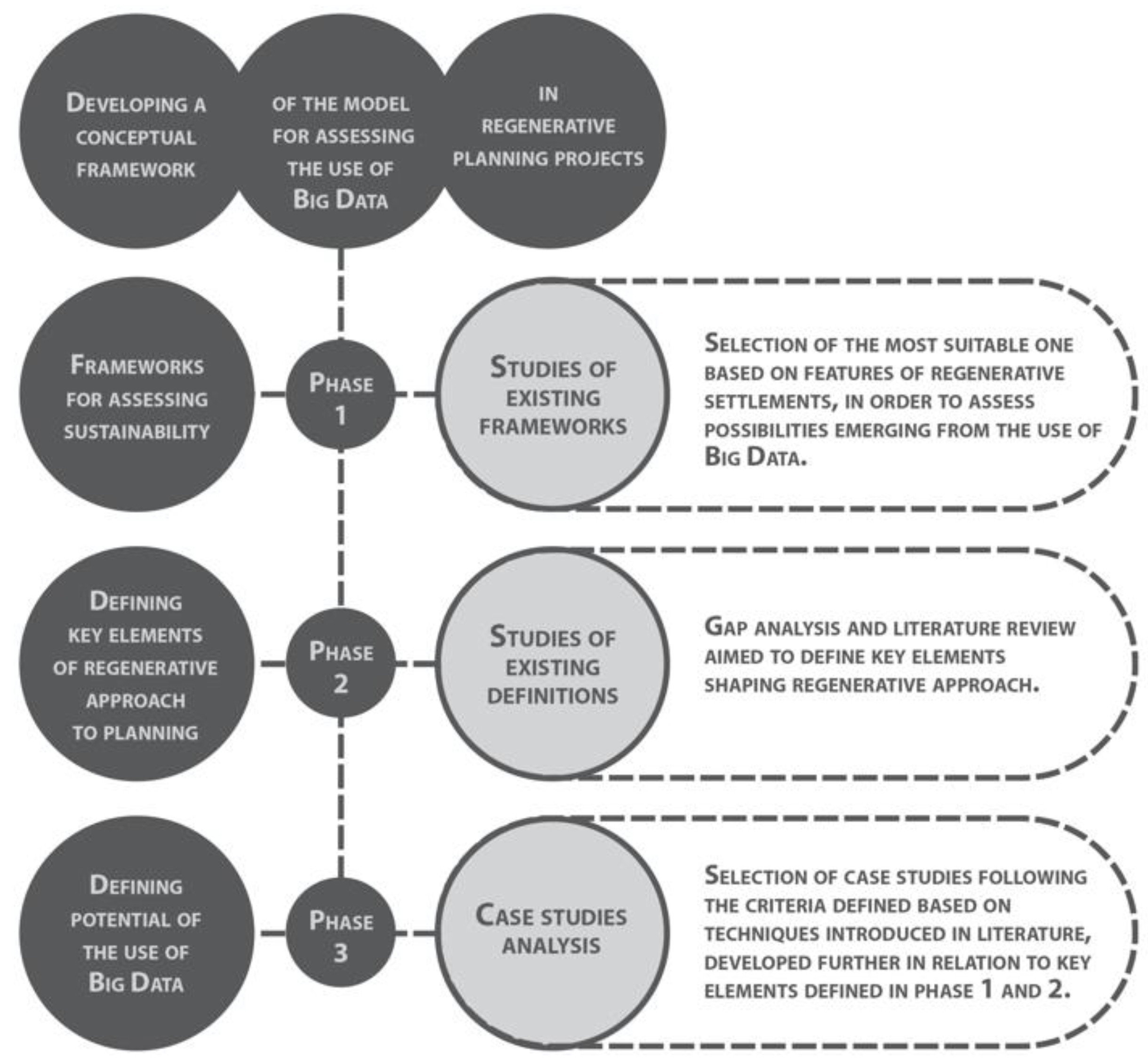
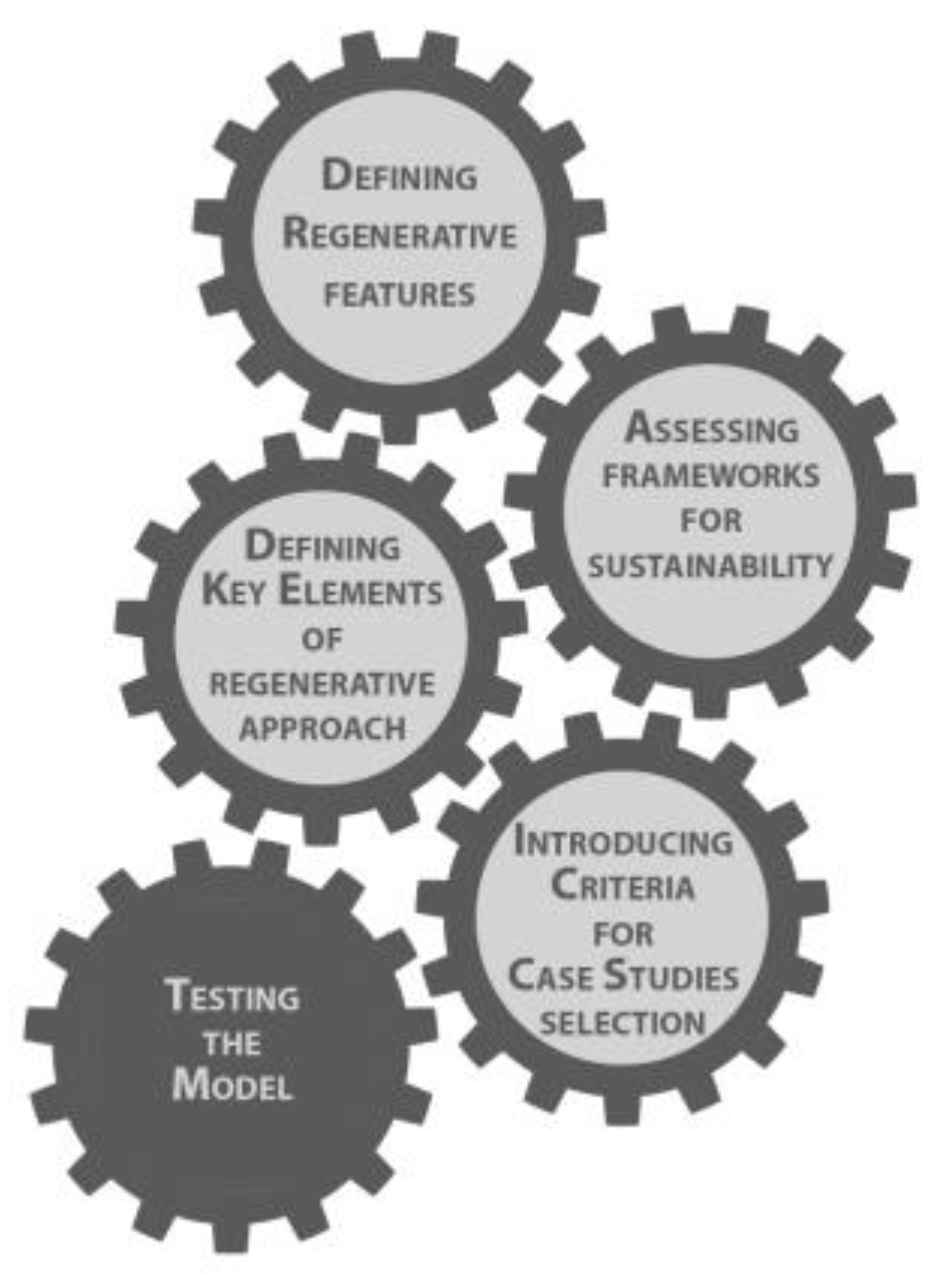
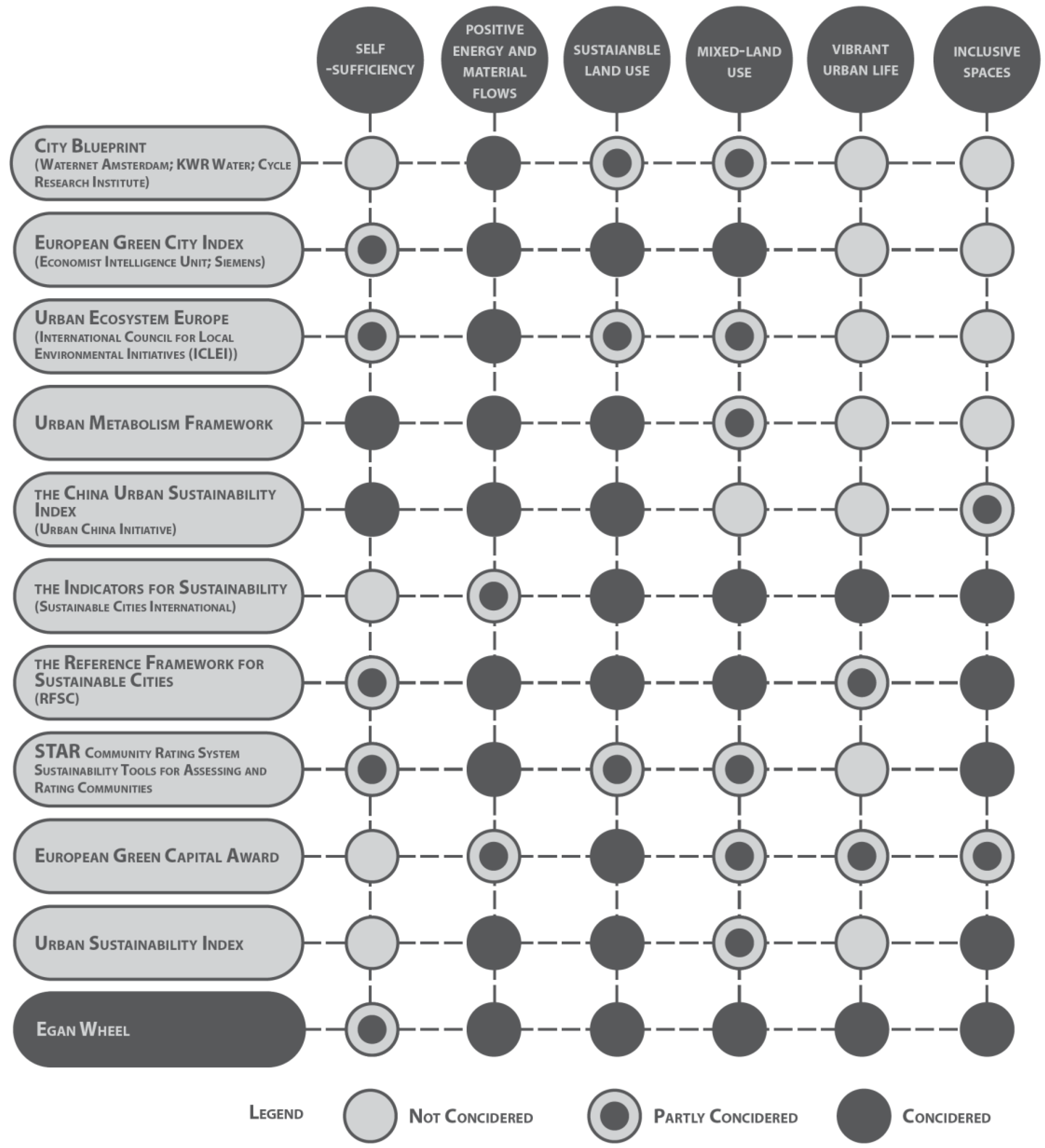
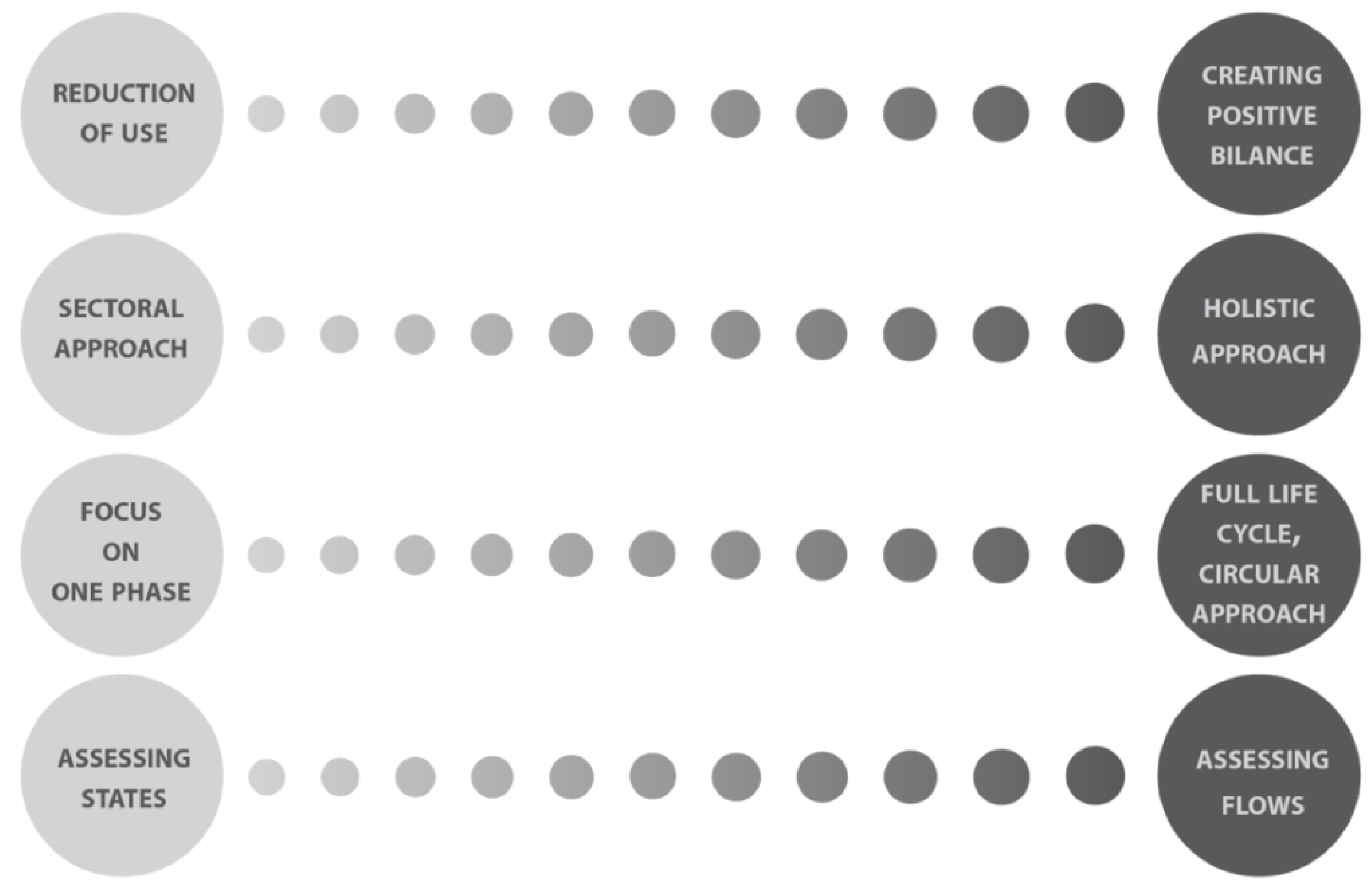
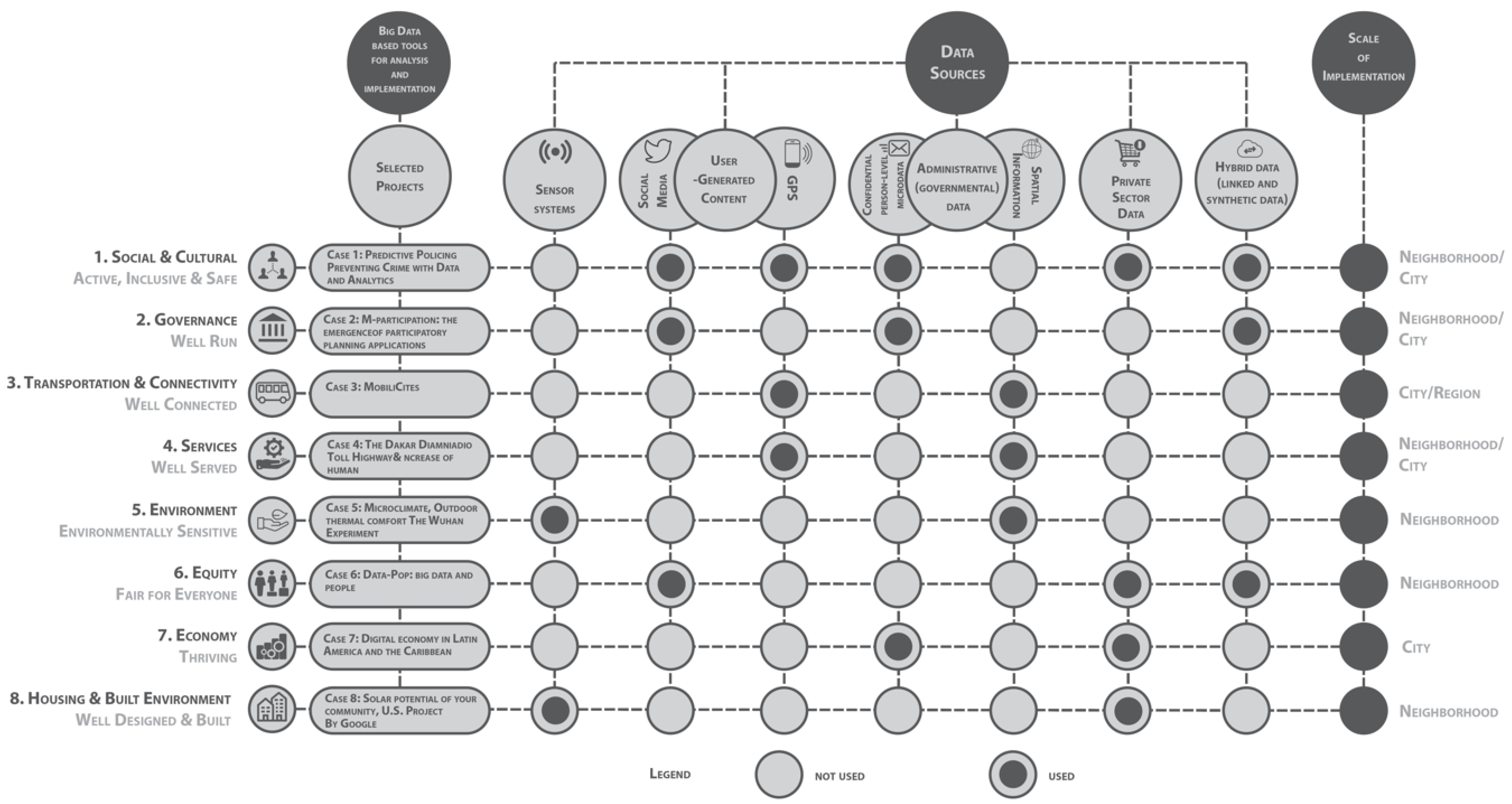









© 2018 by the authors. Licensee MDPI, Basel, Switzerland. This article is an open access article distributed under the terms and conditions of the Creative Commons Attribution (CC BY) license (http://creativecommons.org/licenses/by/4.0/).
Share and Cite
Kamrowska-Zaluska, D.; Obracht-Prondzyńska, H. The Use of Big Data in Regenerative Planning. Sustainability 2018, 10, 3668. https://doi.org/10.3390/su10103668
Kamrowska-Zaluska D, Obracht-Prondzyńska H. The Use of Big Data in Regenerative Planning. Sustainability. 2018; 10(10):3668. https://doi.org/10.3390/su10103668
Chicago/Turabian StyleKamrowska-Zaluska, Dorota, and Hanna Obracht-Prondzyńska. 2018. "The Use of Big Data in Regenerative Planning" Sustainability 10, no. 10: 3668. https://doi.org/10.3390/su10103668
APA StyleKamrowska-Zaluska, D., & Obracht-Prondzyńska, H. (2018). The Use of Big Data in Regenerative Planning. Sustainability, 10(10), 3668. https://doi.org/10.3390/su10103668




